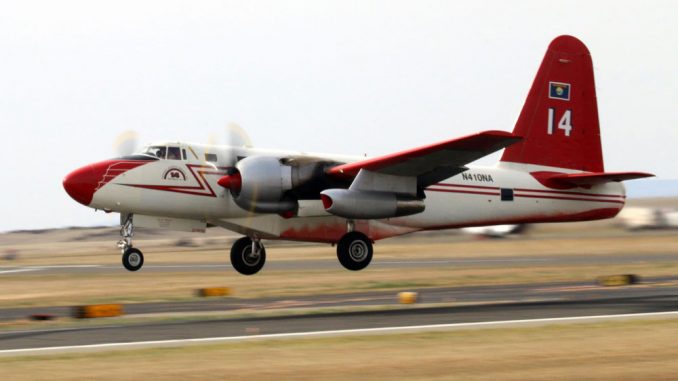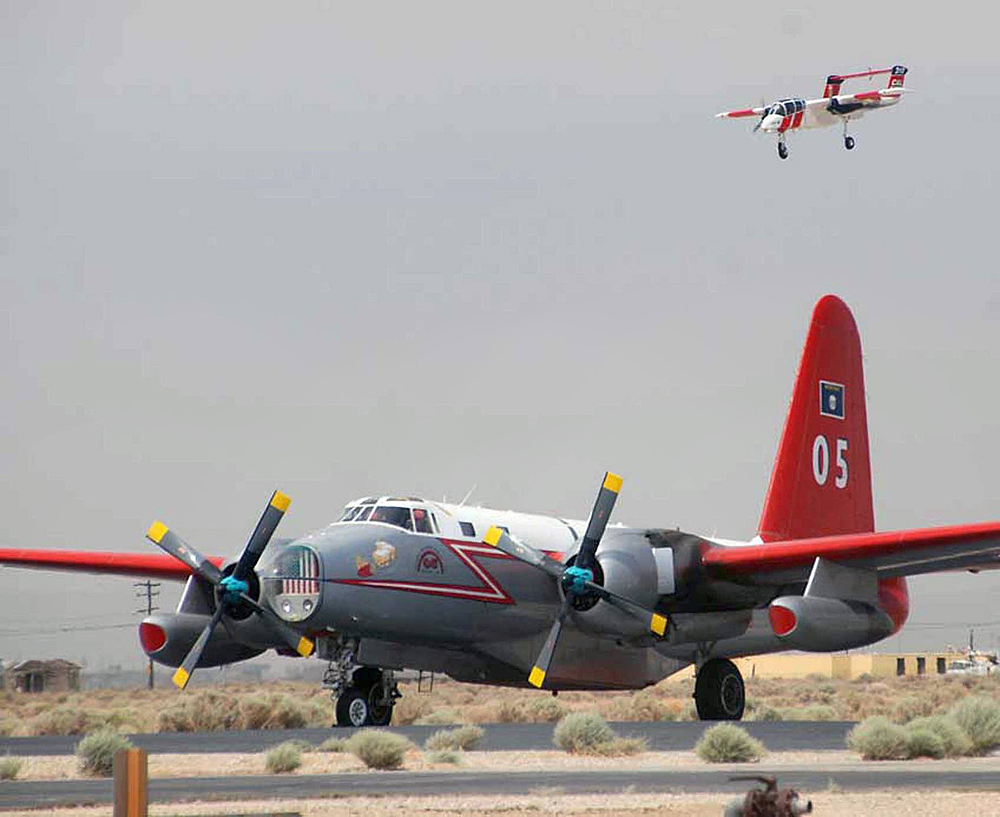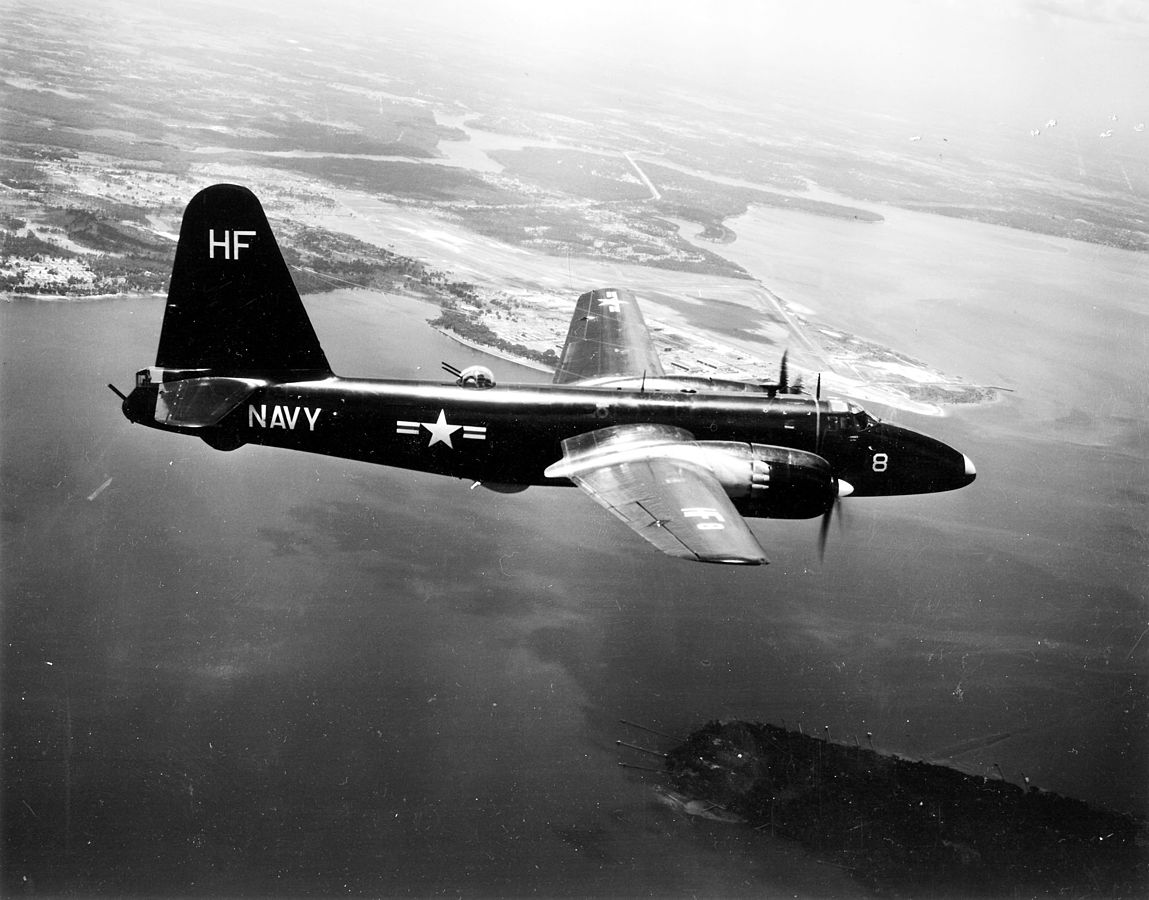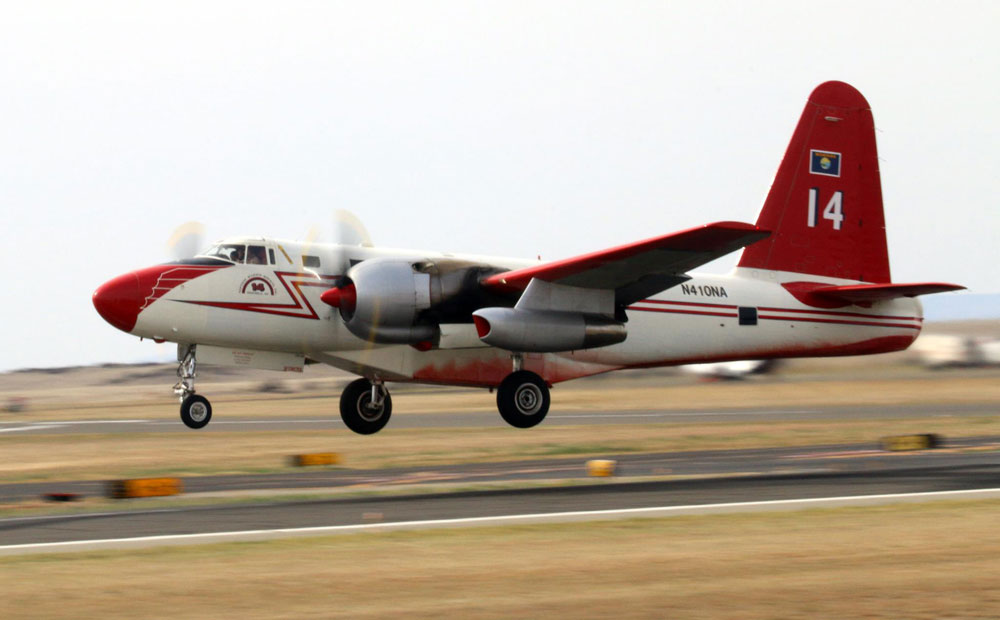

On October 1, 2017 Neptune Aviation Services officially retired the last of their P2V air tankers in a ceremony at the Missoula airport. The company had four of the former submarine hunters on contract that were built between 1954 and 1957 — Tankers 05, 06, 14 and 44. Few weeks ago, Neptune Aviation’s legendary P2V tankers have responded to a deadly firestorm engulfing Northern California just a week out of retirement. Missoula-based Neptune Aviation stated their Tanker 5 and Tanker 14 aircraft have been reactivated. Those P2Vs along with BAE Tankers 2 and 3 are being dispatched to what they call “horrific blazes.” The company reactivated two of its P2V Neptune aerial tankers to support the United States Forestry Service, The Federal Bureau of Land Management and the California Department of Forestry and Fire Protection in an all – out effort to combat the horrendous wild fires devastating northern California ’s wine country, centered in Napa and Sanoma counties .
Neptune Aviation was founded in 1993 as the result of the purchase of Black Hills Aviation in Alamogordo, New Mexico flying converted World War II-era Boeing B-17 ‘Flying Fortress” . Shortly thereafter, operations were moved to Missoula, Montana. At that time, 14 vendors and a nationwide fleet of 44 aircraft provided aerial firefighting services under 3-year exclusive use contracts with the United States Forest Service.
As reported on USA TODAY, “The industry was fueled by a lot of retired [World War II-era] bombers back in the early days,” said Neptune P-2 captain Bob Webb in between flights. But as the older B-17s reached the end of their service life, it was time to move on to a new airplane.The company switched to the Neptune, both in airplane choice and name, in the early 1990s, moving to its current home in Missoula in 1993. The reason for the switch of aircraft wasn’t exactly romantic. “They were just available – there was a desert full of ‘em,” says Webb. Neptune would go on to fly eleven of the planes through their 24-year run with the company.
Most commonly known as the Lockheed P-2 Neptune, the first aircraft flew in 1947 for the U.S. Navy. It served primarily as a long-range submarine hunter and surveillance plane, often staying aloft for over twelve hours on missions along the nation’s coastlines.

Accordingly to Fireaviation.com, Neptune has been operating the P2V air tankers for 24 years. Many pilots and warbird fans enjoy flying, seeing, or hearing the aircraft and the throaty roar of its two 18-cylinder radial engines. When extra power is needed during takeoff or after a 2,000-gallon drop to climb out of a canyon it can enlist the help of two small jet engines farther out on the wings.

In 2012 the company started its retirement program for the P2Vs when they pulled two of their seven operational P2Vs from regular service. Greg Jones, Program Manager for Neptune Aviation, said the tankers will be taken to museums across America.
Tankers T-05 and T-14 were recalled to service and on duty, while T-02 and T-03 were also expected to be recalled to service shortly to join the fight. Accounting for numerous deaths and a tremendous loss of property, with upwards of 8.5 million acres already consumed, the U.S. Forest Service is already calling 2017 the most expensive fire season in that agency’s history.
For more information visit www.neptuneaviation.com



Flew aircrew on P2Vs for 6 years in Naval Air Reserve 1966-1972 at NAS Dallas and VP-60 NAS Glenview, IL
Great ole planes….sad to see them go. A few are in museums…Naval Aviation Museum in Penssacola, Evergreen Avaiation near Portland, OR and…..? Besides Neptune Airtankers, only one navy version still flying based at the Aviation Museum of the Mid-Atlantic(?) in Reading, PA. Two interesting trips…an RON from NAS Dallas to Argentia, NFLD and final 2 week cruise in Rota Spain. Overall was a great experience.